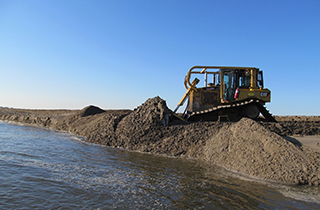

Wildlife that need the cool temperatures of high elevations, such as the American pika, may soon run out of habitat. Pollutants such as untreated sewage, mining waste, acid rain, fertilizers and pesticides concentrate in rivers, lakes and wetlands and eventually end up in estuaries and the food web.Ĭlimate change: The emerging driver of habitat loss is climate change. Pollution: Freshwater wildlife are most impacted by pollution. During the dry season, the Colorado River has little to no water in it by the time it reaches the Sea of Cortez.

Water development: Dams and other water diversions siphon off and disconnect waters, changing hydrology and water chemistry (when nutrients are not able to flow downstream). Land conversion for development: The conversion of lands that once provided wildlife habitat to housing developments, roads, office parks, strip malls, parking lots and industrial sites continues, even during the current economic crisis. Today, there is increasing pressure to redevelop conservation lands for high-priced food and biofuel crops. Habitat degradation: Pollution, invasive species, and disruption of ecosystem processes (such as changing the intensity of fires in an ecosystem) are some of the ways habitats can become so degraded, they no longer support native wildlife.Īgriculture: Much of the habitat loss from agriculture was done long ago when settlers converted forests and prairies to cropland. The loss and fragmentation of habitats makes it difficult for migratory species to find places to rest and feed along their migration routes. These fragments of habitat may not be large or connected enough to support species that need a large territory where they can find mates and food. Aquatic species’ habitats have been fragmented by dams and water diversions.

has been cut up into fragments by roads and development. Habitat fragmentation: Much of the remaining terrestrial wildlife habitat in the U.S. Other ways people directly destroy habitat include filling in wetlands, dredging rivers, mowing fields, and cutting down trees. Habitat destruction: A bulldozer pushing down trees is the iconic image of habitat destruction. Every day there are fewer places left that wildlife can call home. When an ecosystem has been dramatically changed by human activities-such as agriculture, oil and gas exploration, commercial development, or water diversion-it may no longer be able to provide the food, water, cover, and places to raise young that wildlife need to survive. Habitat loss-due to destruction, fragmentation, or degradation of habitat-is the primary threat to the survival of wildlife in the United States.


 0 kommentar(er)
0 kommentar(er)
